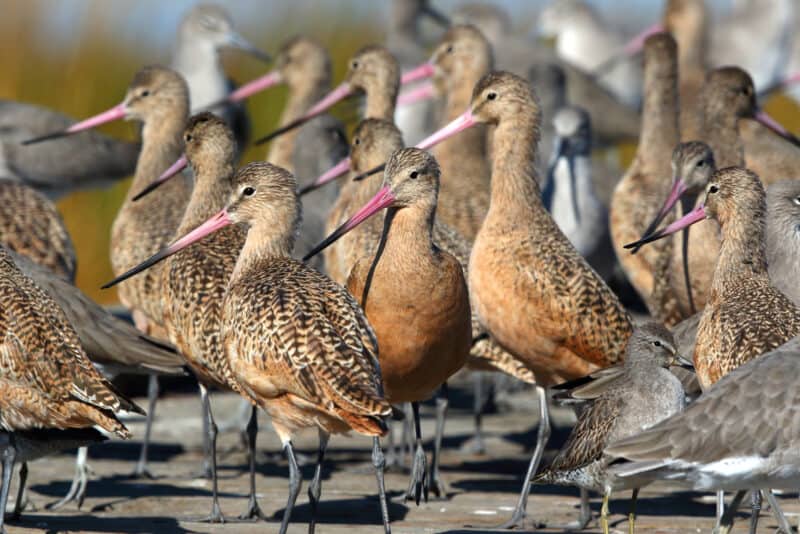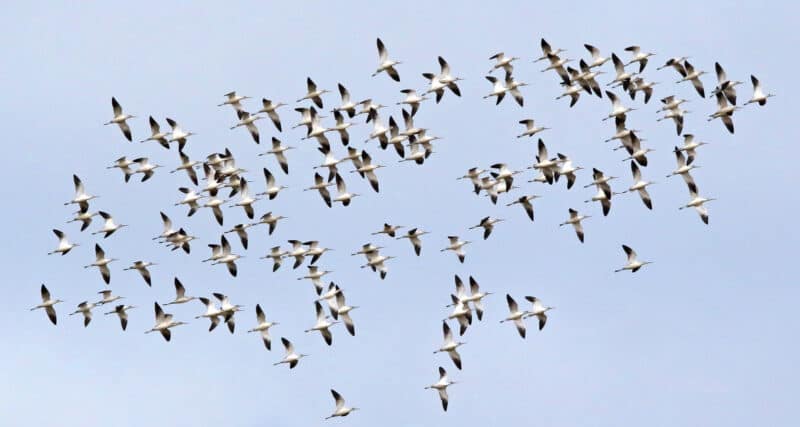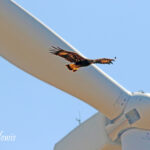
Golden light of autumn warms the low-growing plants along the edge of the shore. The tide is out, perfuming the air with the briney, fecund scent of Bay mud, exposed like a buffet table for the thousands of shorebirds bustling about, searching for a meal. How well I know them and how happy I am at their faithful return after a summer away to their nesting grounds.
Jostling and congregating, they’re anything but quiet. Each species with its own vocalization, exchanging news of a cache of tasty worms, beach hoppers, tiny gem clams, or calling a warning to beware the lurking Peregrine falcon, also hoping for its next feathery meal. Large flocks rise into the air, wings pointed, necks outstretched, to perform a group aerial maneuver — a protective dance done through the ages to confuse a predator. Landing with a renewed chatter, a crisis averted, they settle to feed again.
The fastest birds on the planet, Peregrine falcons hunt shorebirds and other birds — even those that are as large as themselves — using their fast dives to catch the birds mid-flight. Photos Rick Lewis.
Some folks confuse the varying sizes of shorebirds as representing the young and adults of a single species. By the time juvenile shorebirds are ready to fly, though, they’re generally as large as the adults that nurtured them to independence. Young birds may have markings or beak sizes that show they aren’t yet adults. Most shorebirds breed in the Arctic or far northern prairies, where summer days stretch nearly 24 hours and mosquitoes and flies are thick, providing plenty of food for young birds. The birds we see along our shores have flown from those far-reaching summer homes along migratory corridors, called “flyways,” to reach us. The shorebirds here generally fly down the Pacific Flyway. Some will spend the winter here, others are just congregating and refueling to fly further south, chasing the longer days.
This video from naturalist Susan Ramos with the East Bay Regional Park District will get you started in identifying the larger shorebirds.
Climate change threatens how well birds will be able to adapt and survive. With predicted rising tides, the vital shallow-water mudflats may be reduced, or worse, made inaccessible to the birds that depend on the food found there. It would be like someone putting our groceries six feet away from us with no way for us to reach them. Hopefully we’ll avert this terrible situation. The City of Alameda adopted a Climate Action and Resilience Plan (pdf) in 2019, which sets a benchmark by 2030 to reduce greenhouse gas emissions from the city to 50 percent of 2005 levels. You can do your part, too, using Golden Gate Audubon’s Climate Protection Checklist (pdf). It will take all of us working together to make sure we have a planet and city capable of supporting the things we love.

I love coming to the wilderness at the edge of our town. With my back to the traffic, my eyes on the marshy fringe, a place of wildness and nature awaits. You can learn more about our local birds on free, guided walks offered by Golden Gate Audubon.
Sharol Nelson-Embry is a Board Member with the Golden Gate Audubon Society and co-chair of Friends of the Alameda Reserve. She retired from the East Bay Regional Park District as Supervising Naturalist at the Doug Siden Visitor Center at Crab Cove, Crown Memorial State Beach. She currently has an online chocolate tasting business, Cocoa Case, which features “Bird-friendly” chocolates.





